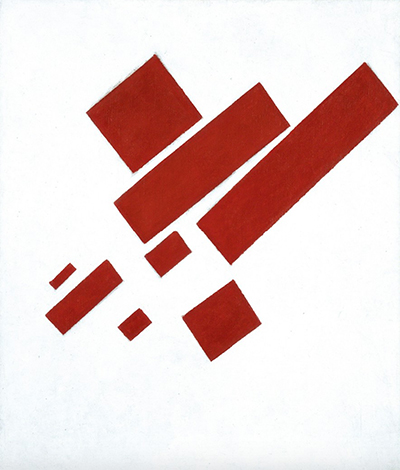In this abstract work by Russian artist Kazimir Malevich, there are eight red rectangles of various sizes and placed at different angles. This groundbreaking artist desired to reduce art down to the smallest elements during this period in his career.
To the untrained eye, many of Malevich's abstract works are just simple collections of lines and shapes - surely there is no talent displayed here. In reality, this Russian painter was creating the newest art movements in the 20th century, in collaboration with a number of other notable names. Such a style had not been seen before, and behind these shapes was a manifesto for art and society in general. A visual display is often just the presentation of a deeper idea and that was the case for many members of the Russian Avant-Garde.
This is one of the few representations which put all shapes in the same colour - the artist would certainly have been representing a specific idea by choosing to do this. In other cases he would use black, blue, red and blue to provide a greater contrast between the abstract items. He took this Suprematist movement into an even more simplistic form with paintings such as Black Cross, where a single shape would exist entirely on it's own.
1915 marked the arrival of this particular artwork and it was around this time that the artist chose to follow this style in most of his work. He felt that a new style of art was needed to match the changing political environment of his own country, which at that stage was known as the Russian Empire. When considering the country's path over the coming years, the artist was clearly aware of what would later occur, with regards the revolution.




